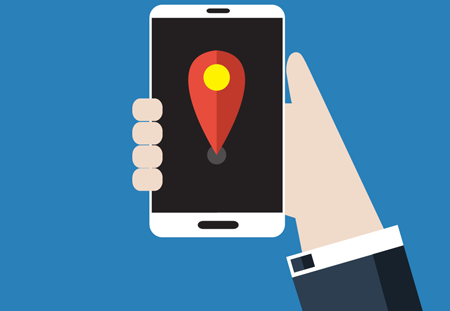STAND OUT & Engage Shoppers on Social

Today's traditional retailers are faced with the persistent challenge of standing out against both increasing competition and ecommerce giants.
As a way to deliver relevant information to consumers, retailers constantly aim to provide an omnichannel experience, knowing that users will often look toward online buying for their initial interest but more frequently make the purchase in-store. To this point, Aberdeen found that companies with strong omnichannel engagement retain an average 89 percent of their customers. However, that isn't enough to stand out against the competition.
In order to provide the best possible experience, retailers have shifted their focus to less traditional methods of engagement and have gained serious traction using social media to garner the mindshare of consumers. Here are the three reasons why today's top retailers should look to social channels to move past omnichannel, and move into a customer-centric approach, when targeting consumers using social channels.
1. Fine-Tune Based on Zip Code

Using social channels to engage with consumers allows retailers to have a better grasp of their audience. In particular, this means allowing users to be identified based on zip code and demographic. In today's digital economy retailers often think it may not matter as much where someone is physically located - so long as they have a decent Wi-Fi connection. This is a common misconception as retailers today, more than ever, should be shifting their focus to providing a personalized and localized experience. This helps boost engagement with consumers as the products they are looking for are often based on location. For a simple example, consumers in the Northeast will have a much larger focus on winter wear than a consumer in Southern California.
Social networks can certainly help retailers identify the exact location of their audience, their demographic and target them better based on the geography of their social postings. This can help retailers provide relevant coupons and promotions for in-store deals depending on where the closest brick and mortar location may be. Having a solid grasp on the location of a consumer is crucial in today's retail landscape and social channels are a primary tool used to achieve this.
2. Promote Impulse Purchases

The beauty of social networks that leverage the power of imagery like Pinterest and Instagram, is that they are able to visually depict items that consumers may not need, but all the sudden want. Today's retailers are faced with the challenge of making their specific product or service stand out. That one same red scarf can be found at nine different retailers with nine different price points. Social networks allow for brands to create possibility for users by engaging with their senses and offering an idealized image of something they may never have heard of.
Shoppers today are constantly engaging with apps and retailers on mobile devices - in fact 75 percent of consumers use mobile devices in-store. This creates incredible potential for retailers to use social channels like Instagram to post pictures of completed outfits with links to where to purchase each piece. This also creates opportunity for social channels that appeal to an idealized vision of an event or a destination, like Pinterest. Creating virtual bulletin boards allows consumers to piece together different potential purchases that could complete one final product, like redecorating a new home. This may influence a consumer to make a purchase that they may not have previously discovered. Social networks leverage the power of images to appeal to their audience and increase the likelihood of impulse purchases.
3. Measure the Quality of Service

Engaging with brands directly through social channels allows retailers to gauge the quality of service in real-time. Not only are brands able to receive feedback from the customers purchasing both in-store and online, they can also see how their competitors are fairing. Any commentary, both positive and negative is often shared through social channels. This can help retailers create a customer-centric experience by understanding if the in-store experience mirrors the digital experience, and vice-versa. This can also provide retailers an understanding of which areas they are lacking and allows them to communicate directly with their consumers in a fast and efficient manner.
Today's consumers are eager to receive the best retail experience. Leveraging social channels in the right manner allows retailers to better engage with their consumers and understand their personal likes and dislikes on a deeper level. If retailers aren't taking advantage of social channels they simply aren't providing the consumer-centric experience that today's consumers both expect and desire, ultimately leading to missed opportunities.
Guy Yehiav is the CEO and Chairman of the Board at Profitect. Prior to Profitect, Guy served as Vice President Sales & Strategy for Oracle's Value Chain Planning Solutions where he was responsible for sales, strategy and customer success. Guy was also founder of Demantra US, a leading global provider of demand-driven planning solutions, which was acquired by Oracle in 2006.







